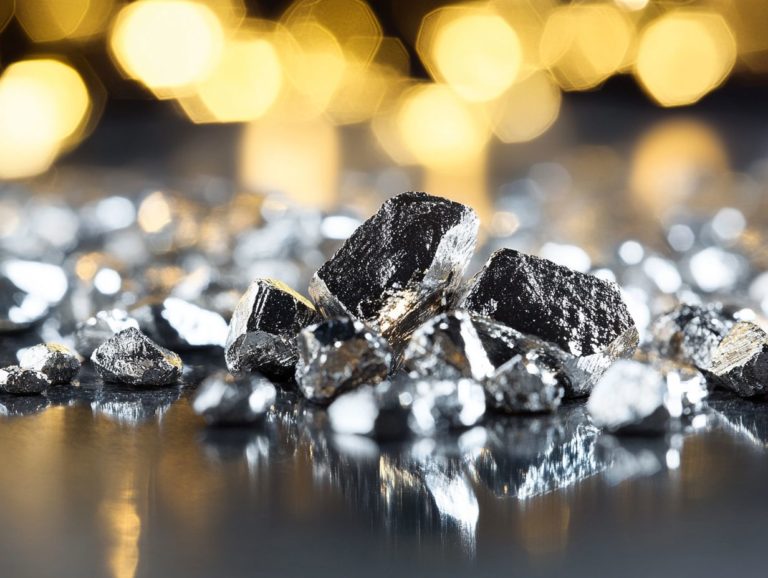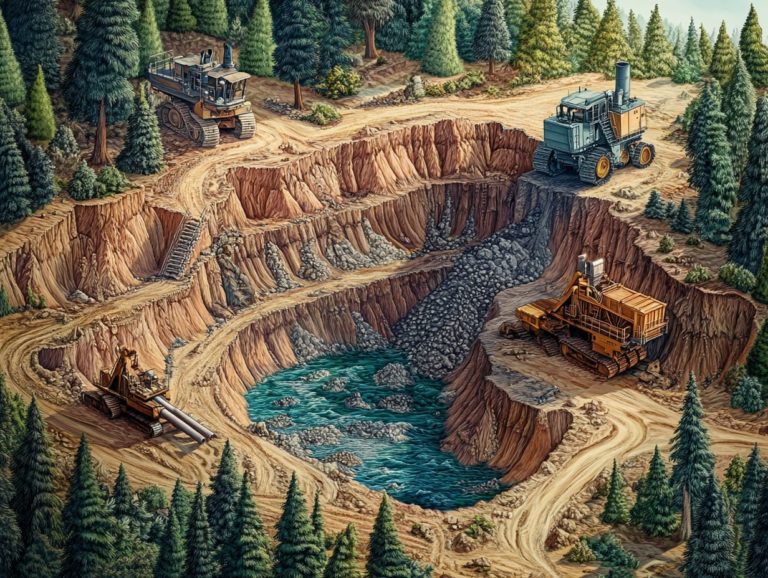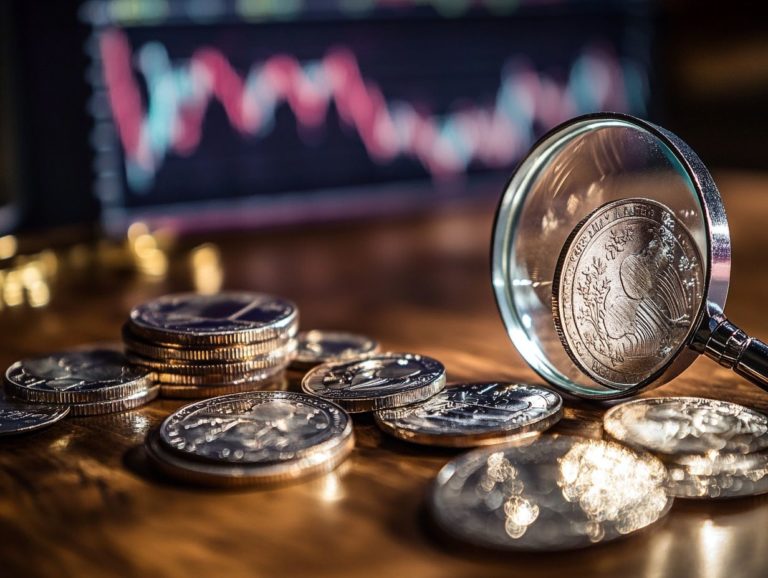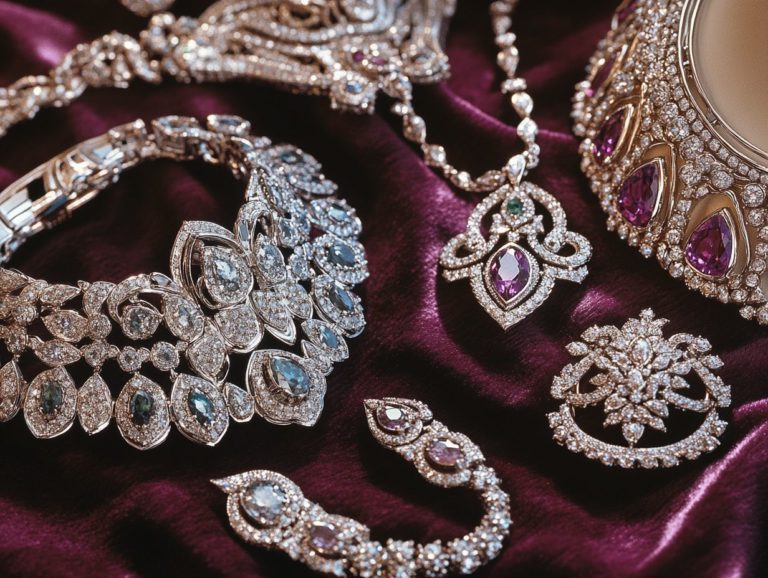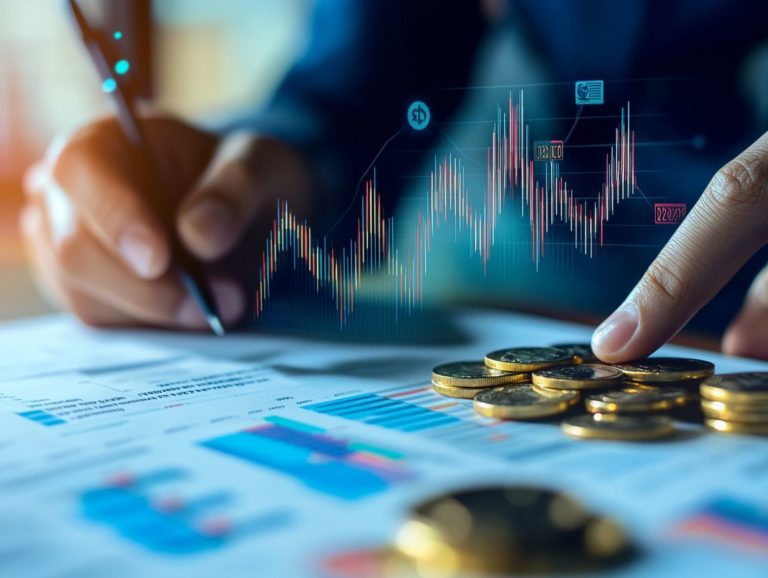5 Key Factors to Consider Before Investing in Palladium
Palladium has become a highly coveted investment option, captivating attention with its distinctive properties and vital role across various industries.
Explore the dynamics of the palladium market by looking into current trends, supply and demand, and the industrial applications that underpin its value.
Political and economic factors, along with potential risks and rewards, significantly influence your investment choices.
Get ready to uncover the secrets of palladium investment!
Contents
- Key Takeaways:
- 1. Current Market Trends
- 2. Supply and Demand
- 3. Industrial Uses
- 4. Political and Economic Factors
- 5. Risk vs. Reward
- What Is Palladium and Why Is It a Popular Investment?
- What Are the Advantages and Disadvantages of Investing in Palladium?
- What Are the Potential Risks of Investing in Palladium?
- How Can One Determine the Best Time to Invest in Palladium?
- What Are the Long-Term Prospects for Palladium Investment?
- Frequently Asked Questions
- What are the 5 key factors to consider before investing in Palladium?
- How does market demand affect the investment potential of Palladium?
- What role do supply levels play in the investment decision for Palladium?
- What economic conditions should investors pay attention to before investing in Palladium?
- How do geopolitical factors play a role in the investment potential of Palladium?
- Why is it important to consider investor sentiment when investing in Palladium?
Key Takeaways:
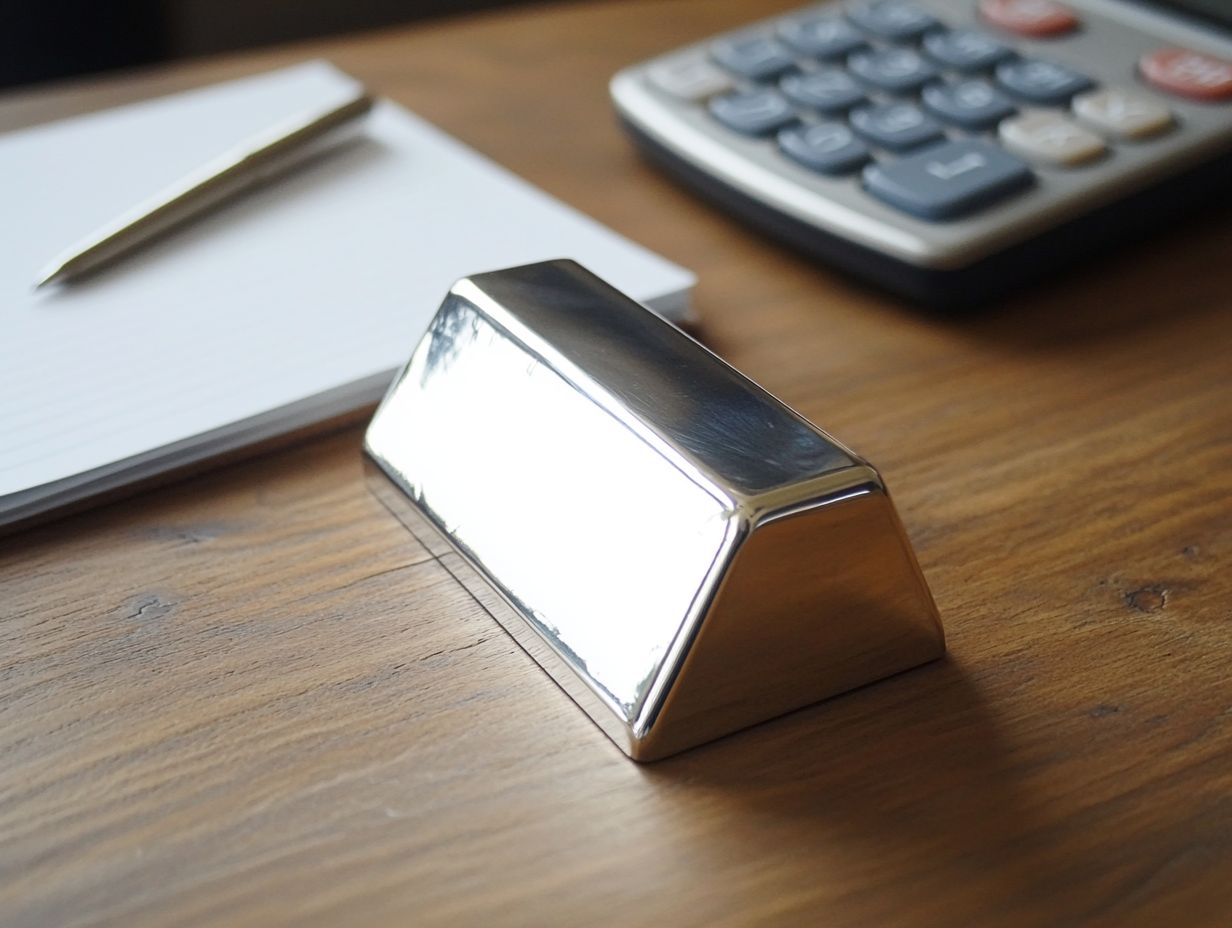
- Stay updated on market trends to seize opportunities in palladium’s price fluctuations.
- Understand the industrial uses of palladium and how they impact its demand and price.
- Evaluate political and economic factors that may affect palladium’s supply and demand.
1. Current Market Trends
In the ever-evolving landscape of precious metals, current market trends for palladium reveal a dynamic interplay of factors shaping its price performance and overall investment allure. Palladium prices are influenced by economic indicators and high demand from the automotive industry, particularly due to its critical role in catalytic converters, which are devices in vehicles that reduce harmful emissions.
Geopolitical risks, mining production levels, and supply chain constraints frequently reshape this precious metal’s market dynamics. Staying informed about these trends is essential for understanding their impact on market value.
Knowing the latest stats can unlock valuable insights into current demand and supply dynamics. For instance, a surge in electric vehicle production might diminish palladium demand, while tightening supply from mining disruptions could create a scarcity that drives prices upward.
Historical trends suggest that prices often react sharply to regulatory changes and shifts in industrial usage. Significant fluctuations, like the dramatic price increases observed in recent years, serve as a reminder of the inherent volatility in this market. As you develop your investment strategies, consider these factors, as they may unveil valuable opportunities or potential risks.
2. Supply and Demand
The delicate balance of supply and demand plays a crucial role in shaping the palladium market. Limited supply from major mining countries like Russia and South Africa often struggles to keep up with the rising demand from industrial applications, especially in the automotive sector.
This ongoing imbalance becomes even more complex with geopolitical tensions that can disrupt mining operations and affect exports, putting additional pressure on available resources. As governments tighten emissions regulations, the automotive industry’s reliance on palladium for catalytic converters continues to grow. Interestingly, advancements in electric vehicles may not immediately lessen this dependence.
For you as an investor, grasping these dynamics presents both challenges and opportunities. The fluctuations in palladium prices can significantly impact your market strategies and potential returns, making it essential to stay informed and agile in this ever-evolving landscape.
3. Industrial Uses
Palladium’s versatility as a precious metal makes it an invaluable asset across a range of industrial applications. From its pivotal role in catalytic converters for the automotive industry to its use in electronic components and even dental fillings, palladium highlights its significance in modern technology and healthcare.
Its catalytic properties are crucial for reducing harmful emissions in vehicles, while also playing a vital role in high-temperature fuel cells, which are energy sources that convert hydrogen into electricity and are essential for sustainable energy solutions.
You might be surprised to learn that top automotive manufacturers like Ford and Nissan rely heavily on palladium to comply with stringent emissions regulations. The dental industry also uses palladium alloys for crowns and bridges, ensuring longevity and a natural appearance in restorative applications.
In the electronics realm, palladium finds its way into the production of connectors and mobile devices, with companies such as Apple integrating it into their technology to enhance performance.
4. Political and Economic Factors

Political and economic factors play a pivotal role in shaping the palladium market, with geopolitical risks from major producing nations like Russia and South Africa introducing uncertainties that can disrupt supply chains. Meanwhile, economic conditions drive demand and influence the investment strategies of traders and investors.
These risks are far from abstract; recent tensions in these regions have resulted in changing production levels, leading to notable price volatility.
Shifts in currency values can enhance palladium’s appeal as a safe-haven asset during inflation.
For you as an industry stakeholder, grasping the intricate relationship between these political issues and broader economic trends is essential. This understanding enables you to make informed decisions that can help mitigate losses and capitalize on potential gains in this fiercely competitive market.
5. Risk vs. Reward
Understanding the risk versus reward dynamics of investing in palladium is crucial for you as an investor aiming to balance your risk tolerance with potential returns. Get ready for the thrilling ride of palladium s price fluctuations, influenced by market trends and geopolitical events.
If you’re considering short-term strategies, act quickly; the market is volatile and full of opportunities! The inherent volatility presents both opportunities and challenges, with the potential for quick gains or losses.
On the flip side, if you’re a long-term investor, you might find comfort in palladium’s historical performance, often viewing it as a hedge against inflation and economic disruptions.
Incorporating palladium into your investment portfolio can be a savvy move, providing a unique asset class that enhances diversification and helps mitigate overall risk. Navigating the complexities of palladium investments typically requires the expertise of a financial advisor, who can offer tailored advice aligned with your individual financial goals and the current market landscape.
What Is Palladium and Why Is It a Popular Investment?
Palladium is a rare and precious metal that has captured your attention as a compelling investment option. Its unique properties, limited supply, and expanding applications in various industries especially automotive and electronics make it stand out. As a key player in the precious metals market, palladium acts not only as a store of value but also as an effective hedge against inflation, which means protecting your money’s value when prices go up.
This makes it an enticing choice for you if you’re looking to diversify your portfolio and refine your overall investment strategy.
Part of the platinum group metals, palladium boasts remarkable corrosion resistance and excellent catalytic properties. This has driven its demand, particularly in vehicle catalytic converters designed to reduce harmful emissions. Historically, palladium may have been overlooked, but recent shifts in environmental regulations and technological advancements have elevated its status dramatically.
With a limited supply predominantly sourced from South Africa and Russia, coupled with robust industrial demand, price spikes and increased investor interest have become the norm. As you explore alternatives to traditional assets, you re likely to recognize palladium s potential for substantial returns and stability in an increasingly volatile economy.
What Are the Different Ways to Invest in Palladium?
You have a variety of avenues to explore when it comes to investing in palladium. Whether you re drawn to the allure of physical bullion like coins and bars or prefer the convenience of financial products such as palladium exchange-traded funds (ETFs) and mutual funds, there s something to match your investment style.
Opting for physical bullion means you get the satisfaction of holding a tangible asset, which can feel secure. However, you ll need to weigh the considerations of storage, insurance, and potential liquidity challenges that come with it.
On the flip side, financial instruments like ETFs provide easy access via stock exchanges and a quick conversion to cash, though they might not offer the physical ownership that some investors deem essential.
Ultimately, the choice between these investment methods hinges on your comfort with market fluctuations and your personal valuation of the accessibility versus the intrinsic appeal of owning the metal itself.
Don t miss the chance to invest in palladium! Explore your options today!
What Are the Advantages and Disadvantages of Investing in Palladium?
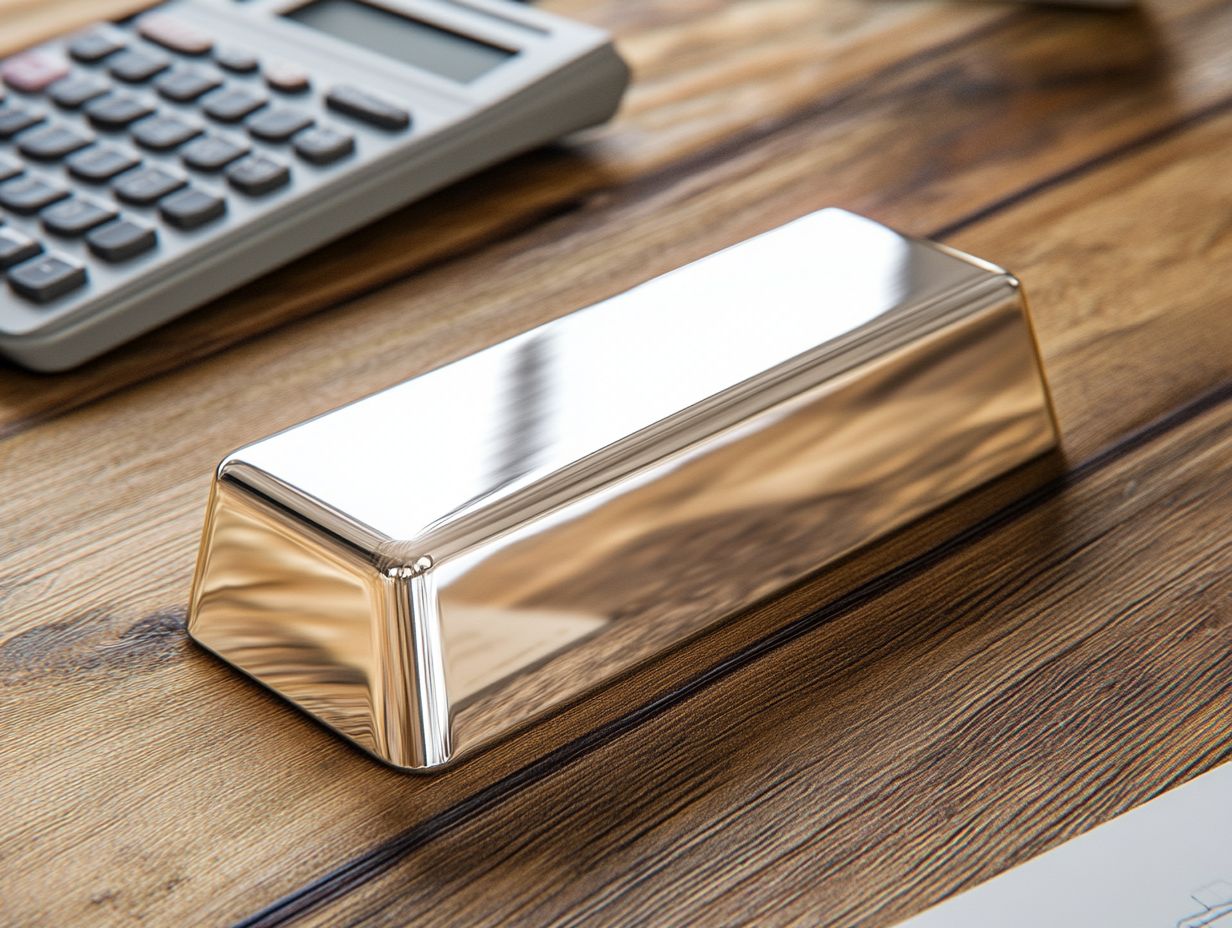
Investing in palladium has both pros and cons, making it essential to evaluate market trends and your personal investment strategy before diving into this precious metal market.
This metal has gained attention for its remarkable potential for high returns, especially as demand surges in the automotive industry due to its role in catalytic converters, which are crucial for reducing harmful emissions. Many view palladium as a reliable hedge against inflation, as it tends to maintain its value during economic downturns.
However, it’s vital to stay aware of the risks involved, particularly those arising from market volatility and changing economic conditions that can influence demand.
By carefully weighing these factors, you can make informed decisions about integrating this asset into your investment portfolio.
What Are the Potential Risks of Investing in Palladium?
Investing in palladium carries its share of risks, influenced by both economic and geopolitical factors that can cause price volatility and impact overall market performance. This calls for a well-thought-out investment strategy.
The unpredictability of market fluctuations can lead to sudden price swings that may significantly affect your returns. Geopolitical tensions in key producing nations, such as Russia and South Africa, can disrupt supply chains and heighten market instability. Economic downturns can also reduce demand for palladium, especially in sectors like automotive manufacturing that rely on this precious metal for catalytic converters.
It is essential to thoroughly understand these complex risks and their implications before committing any capital to palladium investments.
How Can One Determine the Best Time to Invest in Palladium?
Finding the best time to invest in palladium requires a keen understanding of market trends and a thorough evaluation of price performance. Consulting a financial advisor can also help you navigate the ever-changing economic landscape.
Enhance your insights by analyzing price charts and historical data, which reveal crucial patterns and trends for making informed investment choices. It’s important to consider various economic factors, such as fluctuations in supply and demand, geopolitical events, and the performance of alternative metals that could impact palladium prices.
By combining this analysis with a disciplined investment strategy, you can confidently navigate the complexities of the market, seizing opportunities when conditions favor upward price movements or effectively managing risks during downturns.
What Are the Long-Term Prospects for Palladium Investment?
The long-term prospects for your palladium investment look promising, driven by ongoing industrial demand, limited supply, and a dynamic global market landscape that could solidify its status as a strategic asset in your portfolio.
This potential is further influenced by projected market trends, particularly as the automotive sector increasingly embraces palladium in catalytic converters. Technological advancements in extraction and processing may also significantly affect supply.
Broader economic conditions, such as inflation rates and a shift toward greener technologies, could either enhance or diminish demand. Keep a vigilant eye on these factors, as they can lead to fluctuations in market value, presenting both opportunities and challenges in your pursuit of long-term gains.
Watch this video to learn more about investing in palladium.
Frequently Asked Questions
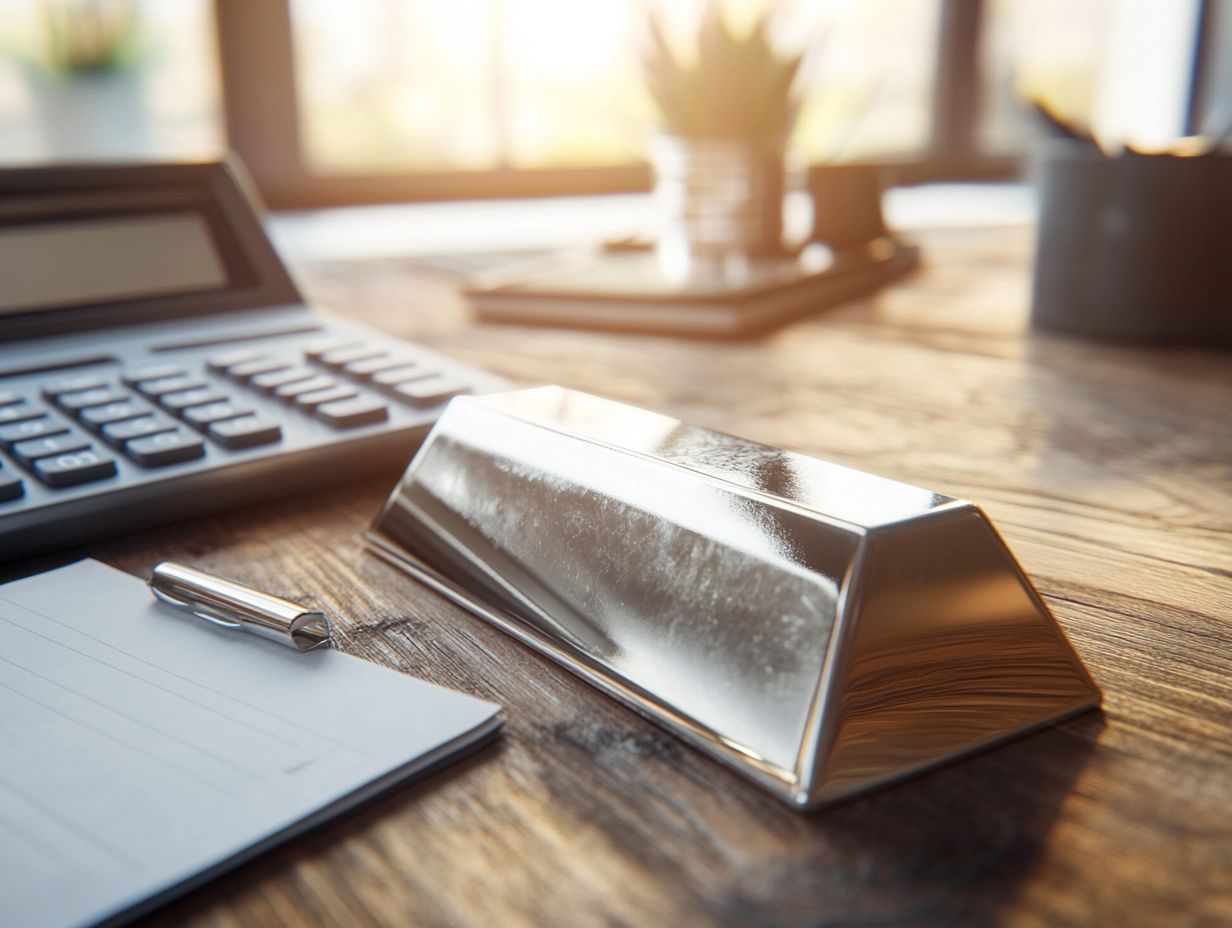
What are the 5 key factors to consider before investing in Palladium?
Here are the 5 key factors you need to know before investing in Palladium: market demand, supply levels, economic conditions, geopolitical factors, and investor sentiment.
Before making any investment, it’s advised to research thoroughly or consult with a financial advisor to ensure you make informed decisions.
How does market demand affect the investment potential of Palladium?
Market demand is crucial for investing in Palladium. As a precious metal used in many industries, changes in demand can significantly impact its value.
What role do supply levels play in the investment decision for Palladium?
Palladium is a limited resource. Low supply or production disruptions usually lead to higher prices, presenting a lucrative investment opportunity.
What economic conditions should investors pay attention to before investing in Palladium?
Economic factors like inflation, interest rates, and global growth can greatly influence Palladium prices. Researching these elements is vital for smart investment decisions.
How do geopolitical factors play a role in the investment potential of Palladium?
International conflicts can disrupt Palladium supply and demand. Monitoring these developments helps investors make informed choices.
Why is it important to consider investor sentiment when investing in Palladium?
Investor sentiment, or how confident investors feel, can sway Palladium prices. Understanding this sentiment is crucial for your investment success!











